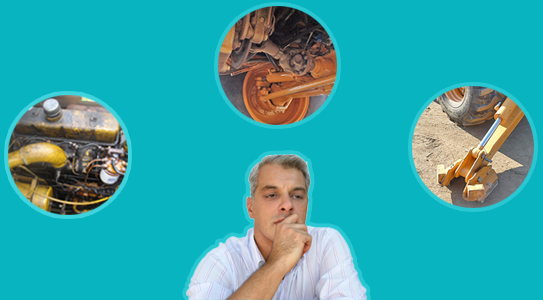Things To Know When Buying A Used Backhoe Loader

Given the boom in the infrastructure sector, a lot of new players both big and small are entering the market. The boom is evident in both, the construction and the construction equipment manufacturing industry. The backhoe loader in particular has a major share in the overall CE segment. While the big players are more than happy to buy their own fleets of the latest equipment’s, the smaller players are looking to make their moolah by spending on used equipment.
Keeping this in mind here are some pointers for newbies looking to buy used backhoe loaders:
- Engine Sound: Listen carefully to what the engine has to say, because it usually tells the truth about how well the machine has been maintained. A machine that has difficulty starting, or starts with a lot of smoke or makes noises that it ideally shouldn’t are first signs of a machine that has not been maintained well. Insist on testing the engine and make sure you take an experienced mechanic along to test and make sure the engine is well maintained and working well.
- Hydraulics: Be patient and check all the components of the hydraulics given that it’s the component that does all the work. Look out for any possible leaks, scratches and dents to ensure that the lubricants do not leak or get contaminated. Couplings should be checked to make sure they are in a good condition. Hoses and cylinders should be checked for any signs of leaks or repairs. Steering difficulty, high fluid temperature, loss in pressure or chattering are signs of problems with the hydraulics. The stabilizers too are dependent on the hydraulics, check for any possible leaks, dents and cracks.
- Look down under: Pay special attention to checking things from the down side up. Check the axle configuration and front axle seals for any signs of leakage. The driveshaft needs to be checked for damage caused by rocks or an unruly terrain. Check the ground beneath the said points to check for first signs of leakage. When in operation, check for any noises coming from the driveshaft it could hint at damage to the transmission or possible replacements of the universal joints on the drive shaft.
- Cab and control: The first thing to notice is the overall cleanliness of the cab. It will give you a decent idea about how well the backhoe loader was maintained. Once inside the cab, check the condition of the seat, joystick, foot pedals. See if the hour reading is consistent with the wear of the cab and the machine on a whole. One the pit is good to go, next comes the operations. Let the engine sound, get the stabilizers down, wheels up and swing the boom in both directions, while keeping an eye out for loose bushings and or pins. Next comes the loader arm being moved up and down. Ensure that the stabilizer pads are undamaged and flat.
- Boom, stick and bucket: Both visual and functional inspections should be done for bends, cracks and welds. Confirm that the overall dig depth is the maximum that you could possibly require. Ensure that there are no missing bolts or teeth on the bucket.
- Structural integrity: Machines tend to wear out over time and tend to require replacements and welds. Ensure that the replacements are compatible with the machine and not inferior in quality. Welds on a general note are weaker than the one piece steel chassis of the machine. Take note of the location and quality of the welds and how it affects the overall integrity of the machine.
- Matter of age: The age of the machine matters significantly when making a choice. However there’s no guarantee that the age of the machine and its working hours are going to be in proportion. An older machine with fewer hours is a better choice to a relatively newer machine which has been abused to work beyond its capacity. Another important factor is the servicing history of the machine that will give you good insight into the condition of the machine.
New or old, a well maintained machine is the best thing you can give your business, for it to Rise!









